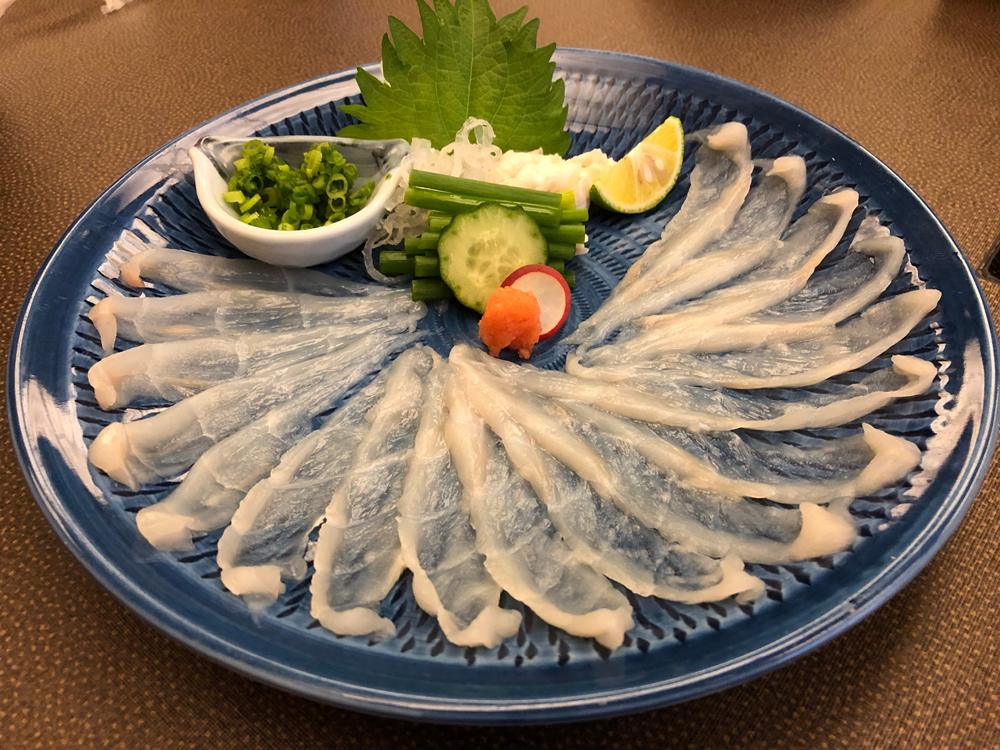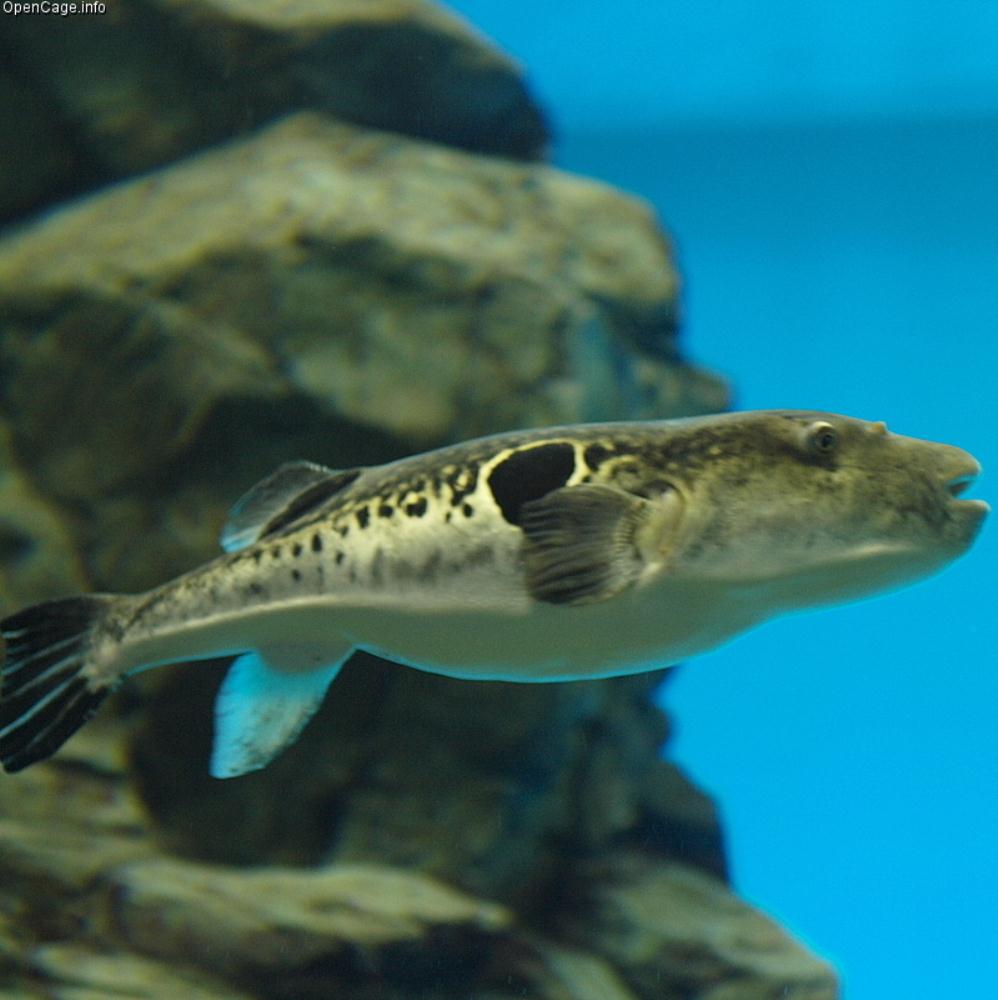

Zuboraya also has another branch (with an inflated pufferfish lantern on its storefront as well) in the busy street of Dotonbori. Established in 1920, the restaurant with its iconic inflated pufferfish lantern hanging out its storefront, is known to specialize in the domestic tiger pufferfish to create a variety of fugu dishes including tessa, tecchiri, and tempura. Located in the most famous area of fugu restaurants in Osaka, Zuboraya is a household name when it comes to fugu dishes. Here are a few of Osaka's top fugu restaurants! Lastly (and surprisingly), fugu can also be served as a hirezake by using its fins, sun-dried and cooked over an open flame, and adding them into hot sake.
#Fugu japanese skin
The fuguâs skin which has a jelly-like consistency and is very rich in collagen can be boiled lightly, making it a perfect snack to eat with alcohol or be added to cold soba â creating fugu nikogori. Its milt is also enjoyed by people, especially grilled which brings out its fragrant smell. The fuguâs meat is not the only thing that can be eaten. For those who like to drink alcohol, they say that deep-fried fugu, known as karaage, is the perfect food to pair it with. A perfect winter dish, the meat and bones of the fugu is mixed with vegetables and mushrooms in a pot filled with kombu-based broth. Meanwhile, tecchiri is what people from the Kansai region call a fugu hotpot. Tessa is what they call fugu prepared sashimi-style thinly sliced and arranged in a floral pattern, it is said that fugu sashimi is best eaten with several pieces, instead of eating individually, and dipping them in ponzu, soy sauce, or momiji-oroshi (grated daikon radish with chili pepper). Known to be an extremely poisonous fish, it is a food that has existed since the ancient times for the Japanese, and the fugu restaurants in Osaka are known to be the best to serve it in the country! No worries, though, as chefs that do serve the poisonous fugu undergo training for at three years before qualifying for a license. Ways to Eat Fugu (Japanese Pufferfish)įugu can be enjoyed in several ways with three styles being the most common: tessa, tecchiri, and karaage. However, if we are talking about Osaka food, one cannot miss out on trying the luxurious pufferfish delicacy, also known as fugu. Takoyaki, okonomiyaki, yakiniku - these are just some of the dishes that come to mind when you mention Osaka, Japanâs famous food capital.

For more information, visit our website at. Osaka is included in a number of our tours including our Best of Japan and Best of Western Japan tours. Prices at the Zuboraya range from 1,000 Yen for a plate of fugu sashimi, up to 8,400 Yen for an elaborate set meal serving the entire fish. For example, fugu skin is used as a sashimi, fugu fins are served in sake, and they even serve fugu ice cream. The flesh of the fugu is normally served as sashimi. The restaurants can be identified by the large, distinctive fugu found hanging in front of their restaurants as can be seen in thephoto from the Shinsekai district of Osaka.

One of the most popular fugu restaurants in Osaka is Zuboraya, a small restaurant chain found in the South Osaka area (Dotombori, Namba, Shinsekai). During the Edo Period, many Kabuki actors died from eating fugu because only wealthy people were able to afford fugu at that time. The analogy here is that eating fugu is like playing with a gun.

In Osaka, fugu is also called “tessa”, which in Osaka dialect also means “gun”. It is “Honey is sweet but the bee stings”. There is a Japanese idiom that fits in this situation. In spite of the fact that chefs who prepare fugu must be licensed by the government, people die every year from eating fugu. While the entire fish contains small amounts of poison, the ovaries from the female fugu and the liver from the male fugu contain large amounts of neuro-toxins and must be removed prior to consumption. But it is estimated that 70% of all the fugu eaten in Japan is consumed in Osaka.įugu sounds like “fuku” which means “happiness” or “good luck”, and is an auspicious fish even though they are poisonous. Most of the fugu in Japan is caught in the Shimonoseki area (the water between the main island of Honshu and the southern island of Kyushu). Another specialty of Osaka, especially in winter is the poisonous fugu (pufferfish). Osaka is said to be a ‘Gourmet Paradise’ for the Japanese and is famous for its specialties such as Okonomiyaki (savory pancakes), Takoyaki (octopus dumplings) and noodles.


 0 kommentar(er)
0 kommentar(er)
